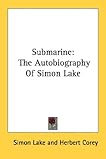Monday, May 31, 2010
The Henrietta Marie - slave ship of the triangular route
In the warm Gulf of Mexico waters 35 miles west of Key West a submerged concrete and bronze marker facing Africa bears these words: "In memory and recognition of the courage, pain and suffering of enslaved African people. Speak her name and gently touch the souls of our ancestors."
With those words, the marker placed in 1993 by the National Association of Black SCUBA Divers commemorates the wreck of the Henrietta Marie, one of the earliest confirmed slave ship wrecks by name ever found in the New World. During the summer of 1700, just after delivering 190 slaves to Jamaica, the homeward bound Henrietta Marie sank at latitude 24° 40.387’ N, longitude 82º22.395’ W on New Ground Reef. No one knows for certain, but it is believed that the the ship and crew were the victims of foul weather in mid-July 1700.
The Henrietta Marie was accidentally discovered by salvors working for renowned treasure hunter Mel Fischer as they searched for the wreck of a Spanish treasure ship. In the Henrietta Marie's debris field lie the twisted remnants of its keel timbers and artifacts such as over eighty sets of shackles for adults and children known as "the bilboes," two anchors, cast-iron cannon, Venetian glass trade beads, iron trade bars, ivory tusks, and a large collection of English made pewter tankards, basins, spoons and bottles. Cargo manifests recorded in Jamaica show the ship also carried 48 tons of sugar, log-wood, ginger, and leftover trade goods. Most important, salvors found the ship's bell positively identifying the wreck as the "Henrietta Marie 1699."
Considered a fast and sturdy vessel, the Henrietta Marie at 170 tons and eight cannon was a typical European merchantman with a square stern, three masts, and multiple cargo decks. Ships of her type ran the "triangular route" taking British trade goods to Africa to barter for slaves, slaves from Africa to British colonies in the West Indies and North America, and tons of raw materials like sugar and indigo from the colonies to England.
Captured from the French by the Royal Navy, the ship was sold to merchants and christened the Henrietta Marie. Before her voyage in 1699-1700, the Henrietta Marie had made an earlier trip during 1697-1698. Arriving back in England she was refurbished and given a new ship's bell inscribed with the date 1699.
Her master on the last voyage had a crew of 18 to 20 men. While a ship of this size could have been crewed by a dozen sailors if it was a merchantman, the extra hands were needed aboard a slaver to watch the captives. Men recruited for slavers came from the dregs of society. Sadly, they were often violent and alcoholic.
The Henrietta Marie left England, taking some three months to reach the stretch of West Africa coast between Gambia and Benin that was the trading territory of the British Royal Africa Company. There the ship and crew spent months collecting slaves by offering trade goods to local kings who had turned slavery, which originally has been a cruel by-product of African warfare, into a primary business.
Scholarly estimates place the number of African slaves sent to the New World between 9 to 15 million persons with as many as three to five million souls perishing during the transit from Africa to the West Indies, which is called the "Middle Passage." While some estimates place the fatalities to be as little as 1.4 million, these are still staggering numbers that almost numb the mind.
The number of slaves aboard the Henrietta Marie may have been about 250 persons when the ship left Africa, possibly Nigeria. From slaves sales records in Jamaica it is know that 190 persons survived the 14 week voyage of the Henrietta Marie from Africa to Jamaica. Their ultimate fate is not known, but it's believed that they lived and died working in Jamaican sugar plantations within five to ten years after their arrival in the New World.
Among the Europeans, only the Quakers and the Moravians seemed to be genuinely concerned about the plight of African slaves. It would been nearly a hundred years after the sinking of the Henrietta Marie before slavery would be abolished, largely due to efforts of English Quaker and evangelical Christians like William Wilberforce, John Newton, Hannah More, Charles Middleton, Thomas Clarkson, and Granville Sharp. The first-hand accounts of Newton, Rev. James Ramsay, and former slaves Ottobah Cugoano and Olaudah Equiano challenged public perceptions of slavery and helped fuel abolitionist sentiments.
In Black Flag, Black Ship, I based the slave ship the Vanity on the real life Henrietta Marie.
Subscribe to:
Post Comments (Atom)














No comments:
Post a Comment